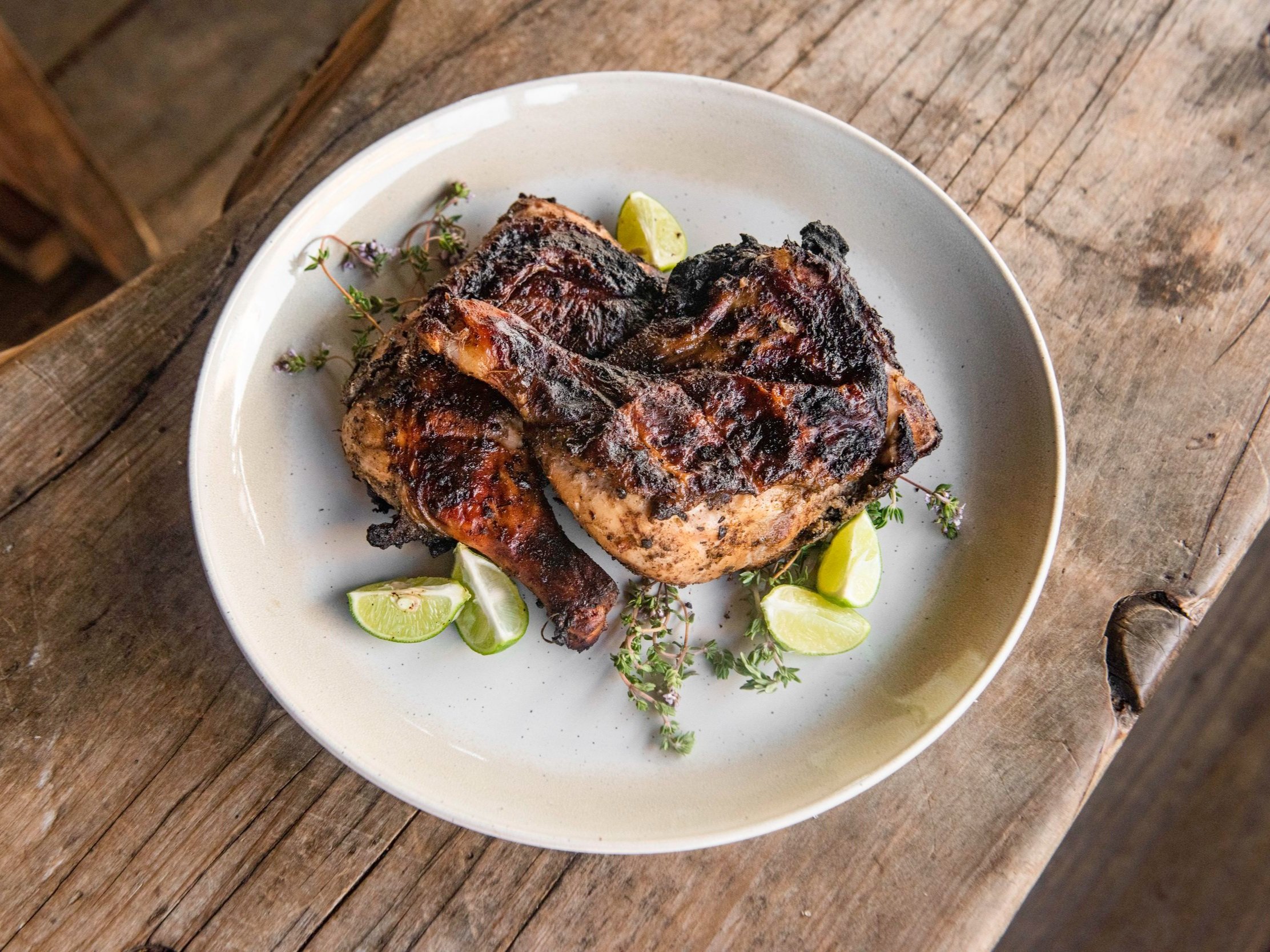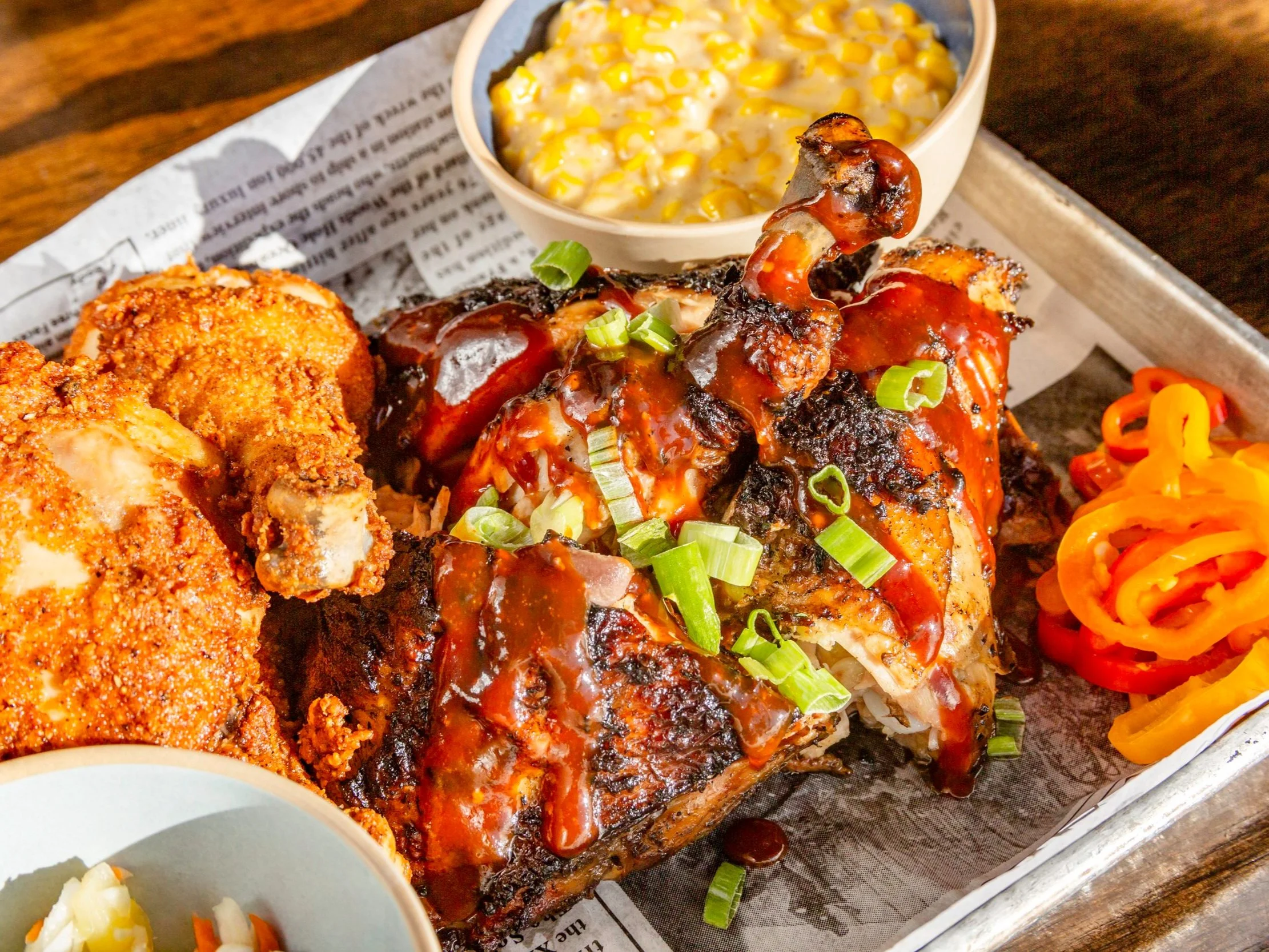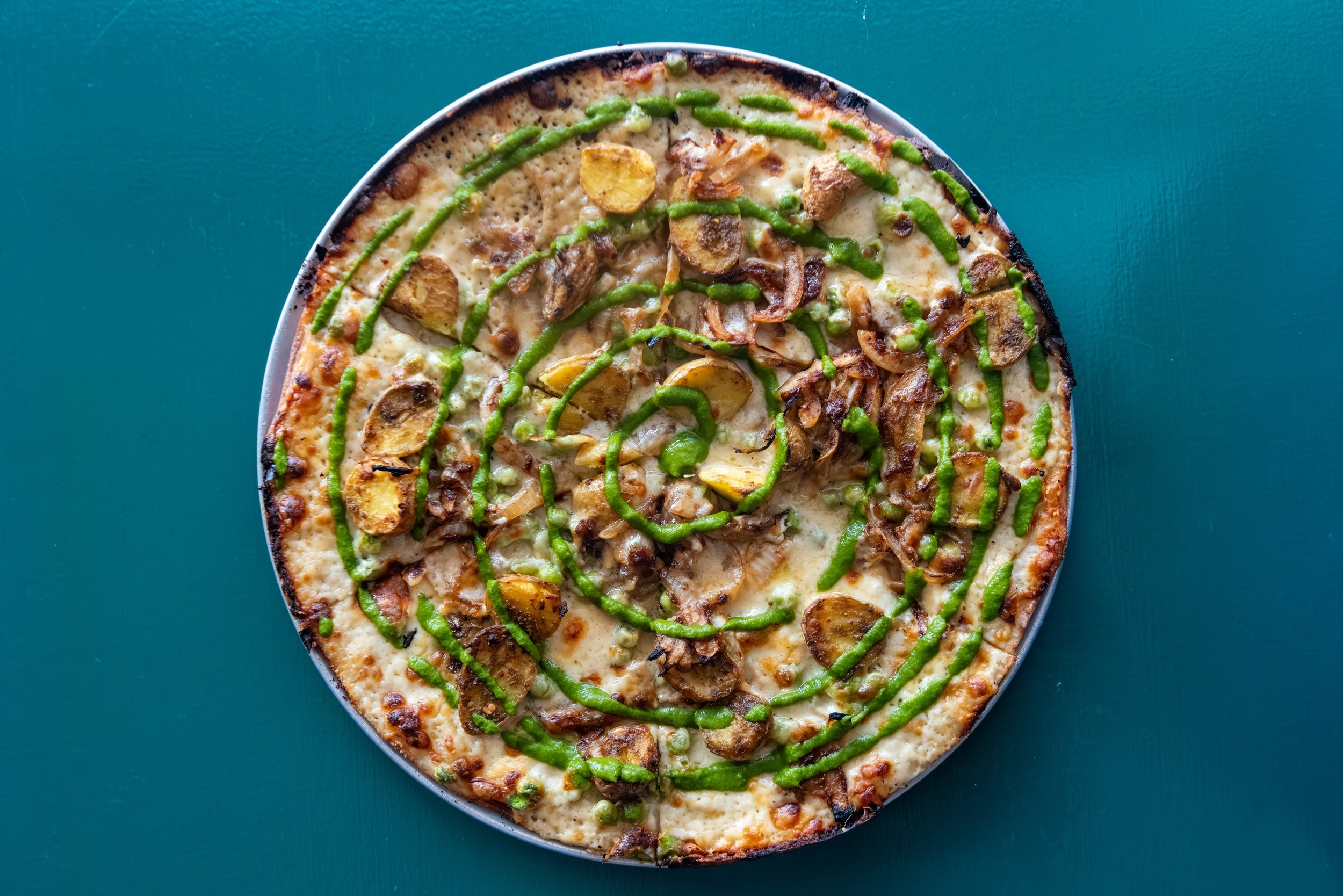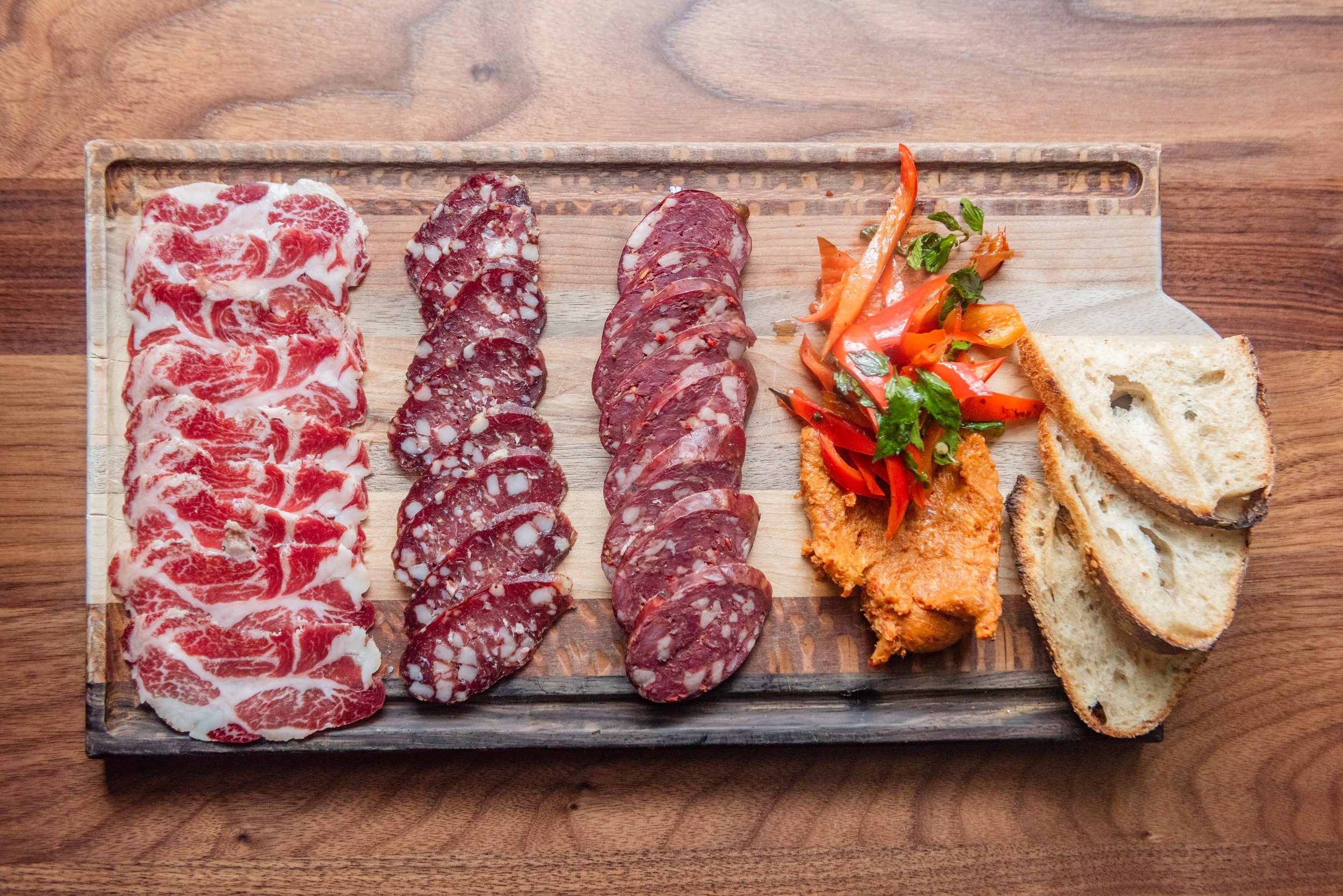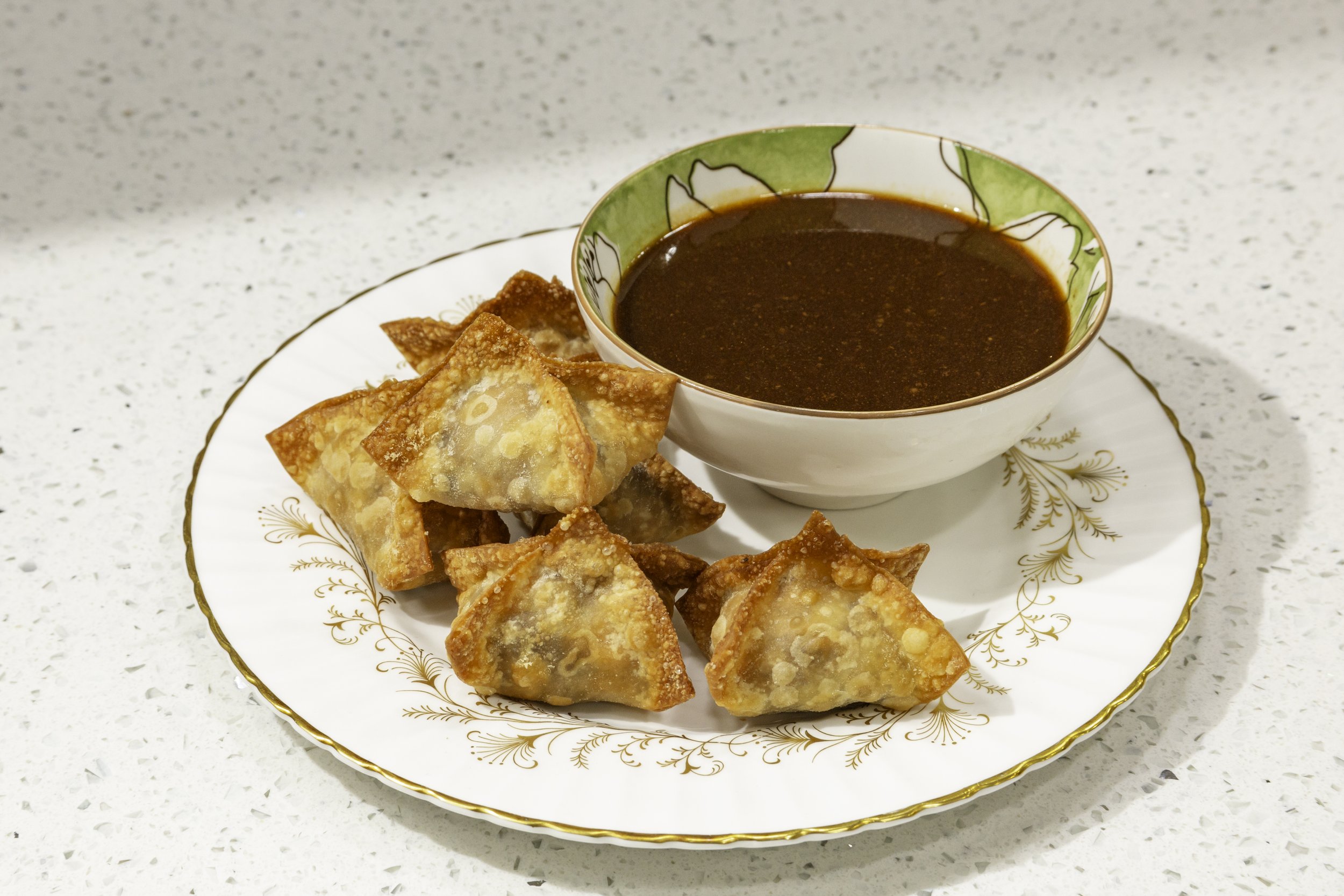Jerk Three Ways
It's a jerk chicken round-up in Central Texas!
Jerk is rich with history and tradition. Originating from Jamaica, jerk is a popular dish across the Caribbean, and even the world—a comforting, nostalgic meal for many. And as jerk travels, its ingredients, cooking process, and format change as chefs make their own versions. Whether smoked in underground pits or in a backyard smoker; or made using traditional Scotch bonnets or habaneros, jerk carries meaning for each chef. In the land of Central Texas barbecue, these chefs are bringing together two storied barbecue traditions.
Mr. Pimento
At Mr. Pimento, “[Jerk] is the heart of our whole concept,” says Chef Clay Spence. At the food truck currently stationed at Buzz Mill Coffee, Spence serves multiple versions of the traditional Jamaican meal. “We selected this portion of Jamaican cuisine because we believe that the flavor profile and story of jerk were robust and appealing to customers.” In addition to serving whole jerk chicken that he lathers in a dry jerk rub before tossing in a jerk sauce, Spence puts his own spin on the dish by offering jerk wings with his Xtra Fiyah sauce, a garlic-heavy, Scotch bonnet-based condiment, for “a baby version of jerk chicken.” And, his jerk jackfruit with sautéed water chestnuts, snap peas, and carrots provides an alternative option for his vegan guests. “Back home in Jamaica, I was lucky to have easy access to jerk vendors. Jerk was served in foil with hot sauce, ketchup, and bread. It’s an experience that engages all the senses, so it's very easy to fall in love [with it]. We thought it would be awesome to replicate that experience for others here in Austin.”
Canje
Canje’s Chef Harvard Aninye first experienced jerk chicken while traveling around Jamaica. “We explored the island and were directed by the locals to a hole-in-the-wall they said had great food. They were right,” says Aninye. Now, as chef de cuisine at the Caribbean restaurant, Aninye and ChefPartner Tavel Bristol-Joseph translate the dish through their own culinary lenses. “Our jerk recipe is very different from most. We use fresh thyme, peppers, scallion, parsley, and garlic. We age our jerk seasoning before using it on our meats and let the jerk sit on our chicken for a minimum of two days before using it.” Instead of the more traditional Scotch bonnet peppers, he opts for local Steelbow Farm habaneros for a fruitier note. Served alongside a pepita-pineapple chutney (reminiscent of a sikil p’aak), Canje's half jerk chicken is “unapologetic” and one of the restaurant’s best sellers. “When it hits the table, you smell it before you even taste it. The first bite you get is mouth-wateringly juicy and aromatic. The heat builds with the second and third bite. By the time you are done, if you don't already have a Red Stripe at the table, you are going to want one.”
The Jerk Shack
“I watched my family making [jerk] all my life,” says Chef Nicola Blaque of The Jerk Shack. Having a deep connection with jerk, especially after traveling to Jamaica to attend her aunt’s funeral and having some of the best jerk chicken in her life, Blaque knew that the dish would be the focal point of her eventual brick-and-mortar. “I had a dream that my aunt was speaking to me, telling me that I needed to use my talents to spread the word of Caribbean food. I woke up one day and The Jerk Shack was all on my mind. I wanted to focus just on the meats, because that’s how it’s served in Jamaica.” Adapting her recipe for Central Texas diners, Blaque chose to tone down the spice level, but otherwise goes with a fairly traditional spice blend of garlic, thyme, pimento, habanero, and brown sugar, and serves the chicken with wet jerk sauce, jerk barbecue sauce, and jerk ranch on the side. She also expanded her menu to include more sides—like rice and peas, collard greens, and mac and cheese—to pair with the chicken and to appeal to an American audience. Blaque describes her jerk as having a salty-sweetness to it, which she introduces through brining her protein. “Living in San Antonio, there isn’t a large Caribbean community, so I’ve made adjustments so that it can be received well. We also don’t have Scotch bonnet peppers and pimento wood [here], which add an extra kick to the meats.”

